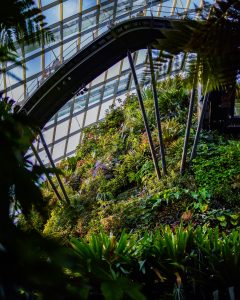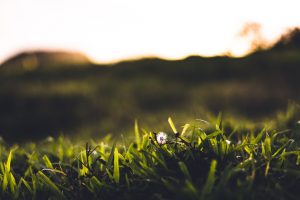The organic trend has officially reached landscaping and it comes with a lot of benefits.
Landscaping is more than just about a pretty yard when it comes to sustainability. Making a habitat backyard is more than just creating a lovely garden. It comes with a lot of factors that can minimize the impact on the environment. The good news about sustainable landscaping is it involves less work.
Creating a beautiful landscape now comes with the requirements of conserving water, steering clear from chemical herbicides and pesticides, and reducing the impact on the environment.
It’s understandable why some people are still not ready to go full on organic. But there are several ways from sustainable landscape designers that others can use to make a more Earth-friendly and low-maintenance yard.
Pick the Right Plants
With sustainability in mind, it’s crucial to choose a selection of plants that will thrive and survive in your location. There’s the responsibility of picking the kinds of plants that can deal with the amount of sun and shade provided by your yard.
As Frank Hyman, owner of Cottage Garden Landscaping in North Carolina, says, every gardener lives by the mantra “right plant for the right place.” Hyman is also the author of the Liberated Gardener blog.
Hyman goes on explaining the said mantra, citing Japanese maples as an example. He says they are understory trees in need of a bit of afternoon shade from big shade trees. They need this so they can thrive and live a long life without the need for irrigation every summer.
Hyman also pointed out another example, like the impatiens. Impatiens, he says, are shade-loving plants. Therefore, they will not do well in the full sun. Periwinkles, on the other hand, thrive in full sun, proving that each plant has varying needs.
Plants thrive in varying conditions so it’s just right to choose the ones that are more suitable to the conditions in your garden. Pick the ones that can stand whatever your yard has to offer. This way, you can rest assured they will remain healthy even without herbicides and pesticides.
Using an exotic plant is alright. It won’t be a big deal as long as it can evolve in conditions similar to what your region and garden can and will provide.
There are, of course, other ways for you to keep your plant healthy in your yard. Mulching, for instance, can contribute to a successful organic landscape.
Mulching is the Way to Go
Mulching requires a lot of attention and patience. Gardeners and landscaping designers know the value of mulching. Without any exaggeration, you have to be religious about mulch. It’s crucial to mulch beds annually before summer comes.
Hyman explains that bare soil is a cardinal sin in gardening. If you don’t want to be a gardening sinner, mulch. Soil requires mulch because, without a cover, it will dry out much faster.
Imagine having to spend more time, money, and resources to water your plants just so you can keep them alive and well. This shouldn’t have to be the case, as long as you mulch, mulch, and mulch.
Here are some of the reasons why mulch is important to the health of your plants.
- Mulch retains water, helping the soil keep the roots moist.
- Mulch prevents soil compaction.
- Mulch insulates the soil, providing a buffer from hot and cold temperatures.
- Mulch keeps away the weeds, preventing root competition in the soil.
- Mulch lowers and prevents lawnmower damage.
- Mulch feeds the earthworms that help keep the soil loose and healthy.
To put it simply, mulching is a must. There are several ways for you to add mulch around your plants, including the following:
- Remove any grass within a 3 to 10-foot area and add mulch to the base of your plant or tree.
- Pour natural mulch, like bark pieces, grass clippings, or wood chips, two to four inches deep within the circle.
- Make sure the mulch doesn’t touch the trunk of the plant or tree.
The bottom line is prioritize mulching your landscape to make it organic and sustainable. It will pay off in the long run, making plants alive and well all throughout any season.
Reduce and Reuse Waste
Gardens are not free from waste. Dried leaves, withered flowers, grass clippings — you name it. But Hyman points out that it’s OK to leave grass clippings on the lawn. They will dry up, fall down to the soil surface, and become food for earthworms. These critters will turn the clippings into organic fertilizer.
On the other hand, Hyman recommends doing the same with fallen tree leaves. Raking them into a low, wide pile is advisable. Shred them with a mower, and then spread into veggie gardens and flower beds. After all, fallen leaves make a good substitute for mulch.
The New Face of Lawns
Mowing your lawn can be drastic, but the key to saving money, time, and natural resources is to not have one. Confused? Well, Evelyn Hadden, author of Beautiful No-Mow Yards, explains that the so-called “lawn-free” movement has been growing steadily because of the advantages.
The movement debunks the pursuit of “lawn perfection.” If that’s the case, what makes a no-mow yard enticing?
Hadden says these lawns offer more privacy, better comfort, a more pleasant scent, welcome animal visitors, less maintenance, four-season views, and a reduced impact on the environment.

But the trend goes beyond these benefits. According to Hadden, the “lawn-free” movement helps a lot in increasing awareness of the environmental concerns brought by maintaining a grass lawn. The simple use of fertilizer, water, fumes, and pesticides takes a toll on the environment.
Hadden explains that the trend is about converting lawns into landscapes that can stand alone with less help. This explanation perfectly depicts organic landscaping: requiring less work, less maintenance, and less impact on the environment.
Creating the ideal organic landscape isn’t hard. Focusing on the key factors can help you achieve the beautiful and sustainable garden you want.

